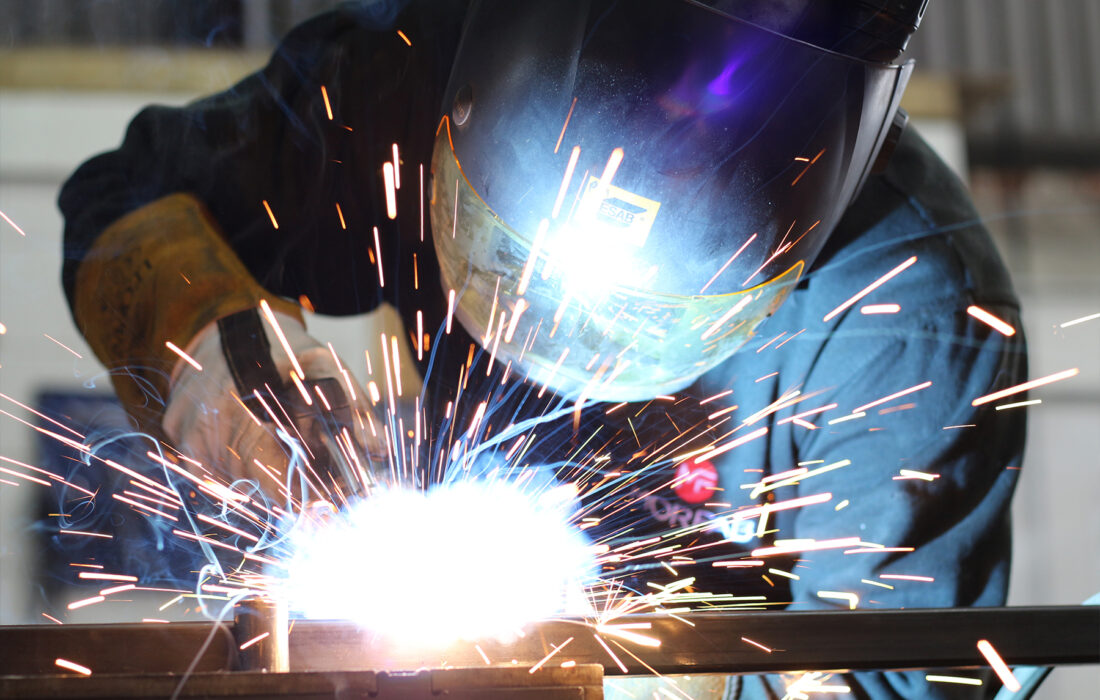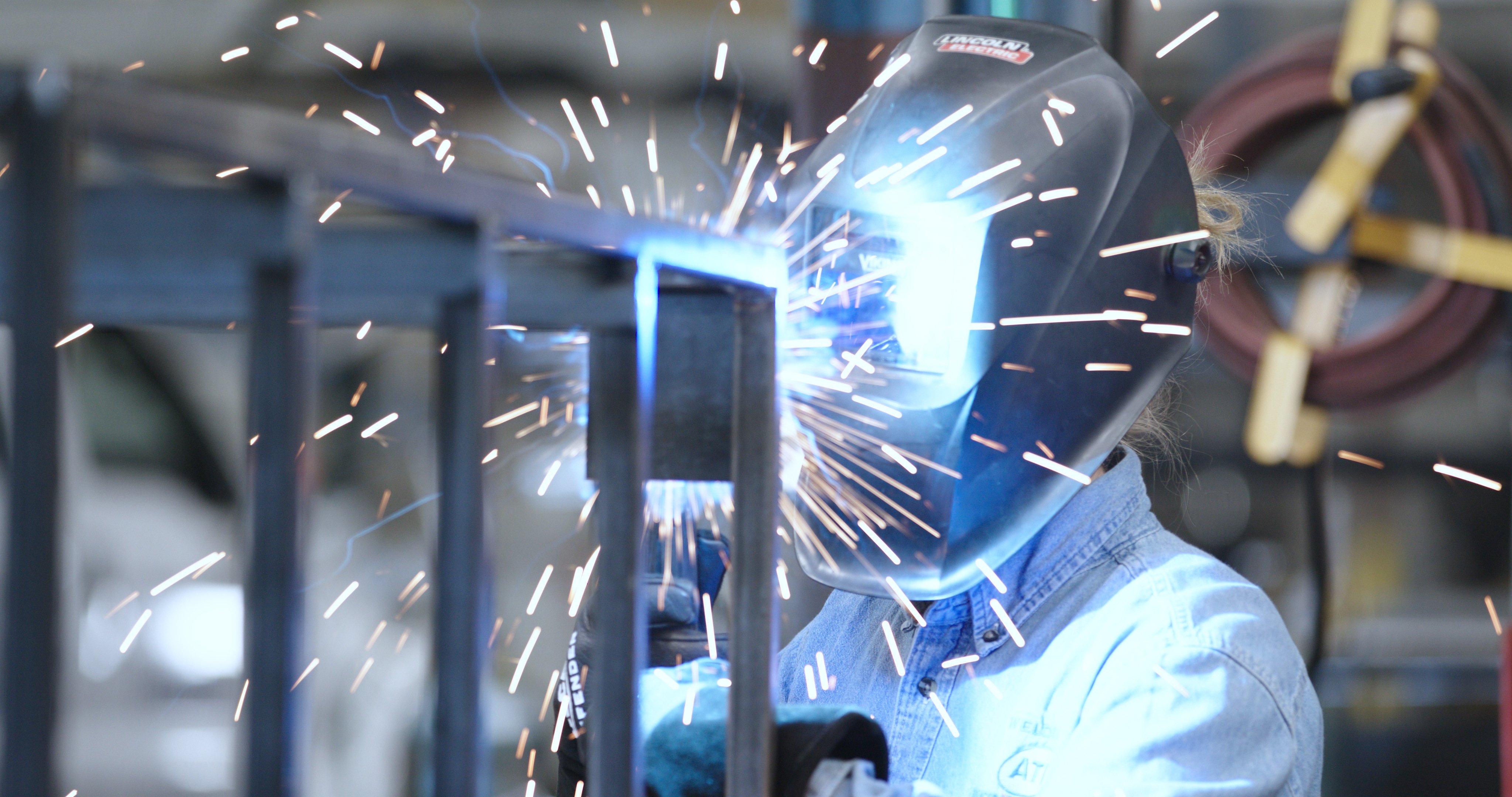Everything you should know about overheating prevention from Montana Mobile Welding and Repair
All Concerning Welding: Secret Insights Into Techniques and Finest Practices for Success
Welding encompasses a variety of strategies, each suited for details materials and applications. Understanding these approaches, such as GMAW, SMAW, and TIG, is necessary for achieving excellent results. Moreover, the best devices and safety and security practices can not be forgotten. As prep work and repairing play important roles in the welding process, understanding these aspects can significantly improve the quality of the end product. What are the crucial aspects that ensure an effective weld?
Recognizing Different Welding Techniques
Welding methods include a range of methods, each suited to certain applications and products. Amongst the most common techniques are Gas Steel Arc Welding (GMAW), Shielded Metal Arc Welding (SMAW), and Tungsten Inert Gas Welding (TIG) GMAW, additionally recognized as MIG welding, is prominent for its speed and versatility, making it optimal for slim products. SMAW, or stick welding, is preferred for its simplicity and efficiency in outside settings, specifically with thicker steels. TIG welding uses accuracy and control, making it appropriate for elaborate work and non-ferrous steels (Belgrade Welding). Each strategy has its one-of-a-kind advantages and considerations, allowing welders to pick the ideal method based upon the project's demands, product kind, and preferred outcomes. Recognizing these methods is crucial for effective welding
Necessary Welding Devices and Tools
While various welding techniques call for specific abilities, the right tools and tools are just as crucial for accomplishing quality results. Necessary welding tools consists of welding equipments, which vary depending on the technique-- such as MIG, TIG, or stick welding. Safety equipment, including handwear covers, aprons, and headgears, guarantees safety and security and comfort throughout the process. Furthermore, clamps and components help safeguard materials in position, making sure accuracy in welds. Consumables like welding rods, wire, and protecting gas are additionally crucial parts that influence the quality of the weld. In addition, tools such as cutters and mills assist in surface area preparation and post-weld completing, adding to a specialist outcome. Purchasing top quality equipment ultimately improves the performance and efficiency of welding projects.
Security Practices in Welding
Appropriate safety and security practices are crucial in the welding industry to protect employees from possible threats. Welders need to use suitable individual protective equipment (PPE), including helmets with proper shading, handwear covers, and flame-resistant clothes. Sufficient ventilation is essential to decrease direct exposure to dangerous fumes and gases created throughout the welding procedure. Additionally, employees must be educated in the proper handling of welding equipment to stop accidents. Fire precaution, such as maintaining combustible products away from the welding location and having fire extinguishers easily available, are required. Routine assessments of devices and work spaces can aid determine prospective risks before they bring about mishaps. By adhering to these safety techniques, welders can produce a safer working setting and lessen dangers associated with their trade.
Readying Products for Welding
Preparing products for welding is a crucial step that greatly influences the top quality and integrity of the final product (Belgrade Welding). Proper preparation includes cleaning the surface areas to remove impurities such as corrosion, dust, and oil, which can jeopardize the weld. Techniques such as grinding, fining sand, or making use of solvents are frequently employed to attain a tidy surface. Furthermore, making certain that the products fit with each other well is necessary; spaces can lead to weak welds. It's additionally crucial to take into consideration the placement and positioning of the parts, as this will certainly impact the ease of welding and the final outcome. Choosing the suitable filler product and making certain compatibility with the base steels is important for accomplishing strong, resilient welds.
Tips for Achieving High-Quality Welds
Accomplishing premium welds calls for interest to detail and adherence to ideal techniques throughout the welding process. Correct joint prep work is important, making sure surface areas are tidy and free from pollutants. Choosing the suitable filler product and welding method based upon the base metals is critical for ideal bonding. Maintaining constant traveling rate and angle while welding can stop defects and advertise uniformity. In addition, managing warmth input is vital; too much heat can cause bending and weakened joints. If required, frequently examining the welds during the procedure permits for prompt changes. Utilizing proper post-weld therapies, such as cleaning and stress relief, can enhance the sturdiness and integrity of the weld, ultimately making certain a successful end result.
Fixing Usual Welding Issues
Welding frequently offers challenges that can impact the quality and honesty of the end product. Usual issues such as porosity, irregular weld beads, and getting too hot can emerge, each needing certain repairing techniques. Comprehending these issues is essential for welders to boost their abilities and attain ideal outcomes.
Porosity Issues Explained
Although porosity can usually be ignored, it stays an important problem in welding that can compromise the stability of a completed item. Porosity describes the visibility of small gas pockets within the weld bead, which can compromise the joint and lead to premature failing. This problem commonly emerges from pollutants, dampness, or incorrect securing gas protection during the welding procedure. To mitigate porosity, welders should verify that the click here base materials are dry and clean, make use of proper shielding gases, and preserve constant welding specifications. On a regular basis checking the devices and setting can also help determine potential problems prior to they manifest in the weld. Attending to porosity successfully is necessary for accomplishing solid, resilient welds that satisfy quality criteria.

Irregular Weld Beads
Inconsistent weld grains can significantly impact the top quality and strength of a finished product. Different variables add to this problem, consisting of inappropriate travel rate, incorrect amperage setups, and inconsistent electrode angles. When the welder relocates too quickly, a grain may show up slim and lack infiltration, while moving also slowly can trigger extreme accumulation. Additionally, using the incorrect amperage can lead to either undercutting or excessive spatter, both of which concession weld stability. The welder's strategy, such as inconsistent lantern motion, can likewise lead to unequal bead appearance. To reduce these issues, welders must focus on preserving steady, regulated motions and ensuring appropriate tools settings to achieve uniformity in their welds. Uniformity is essential to accomplishing reliable and solid welds.
Getting Too Hot and Bending Issues
Too much warmth throughout the welding process can result in substantial overheating and warping problems, influencing the architectural stability of the workpiece. These troubles typically show up as distortion, which can jeopardize placement and fit-up, making further assembly testing. Elements contributing to overheating consist of the choice of welding parameters, such as voltage and travel rate, in addition to the type of material being welded. To reduce these concerns, welders need to maintain regular traveling speed and ideal warmth input while keeping an eye on the workpiece temperature. Furthermore, pre-heating or post-weld heat treatment can help alleviate stresses brought on by quick air conditioning - Belgrade. Routine assessment and adherence to best practices are essential in preventing overheating and guaranteeing the durability and integrity of bonded structures
Frequently Asked Concerns
What Are the Occupation Opportunities in the Welding Market?
The welding industry provides varied profession possibilities, consisting of settings as welders, designers, instructors, and assessors. Specialists can work in production, building and construction, aerospace, and auto industries, taking advantage of solid demand and affordable wages in numerous roles.
Exactly How Can I Enhance My Welding Speed Without Giving Up High Quality?
To improve welding speed without giving up high quality, one ought to exercise reliable techniques, keep devices, optimize settings, and improve hand-eye coordination. Regular training and seeking responses can additionally considerably contribute to attaining faster, high-quality welds.
What Accreditations Are Offered for Welders?
Many qualifications exist for welders, including those from the American Welding Society (AWS), the National Center for Building And Construction Education And Learning and Research Study (NCCER), and different industry-specific companies. These qualifications boost employability and demonstrate ability efficiency.
Exactly How Does Welding Influence the Characteristics of Metals?
Welding influences the residential or commercial properties of steels by changing their microstructure, which can result in adjustments in toughness, solidity, and ductility. Warm input and air conditioning prices throughout the process substantially affect these product characteristics.
Can I Weld Dissimilar Metals With Each Other?
